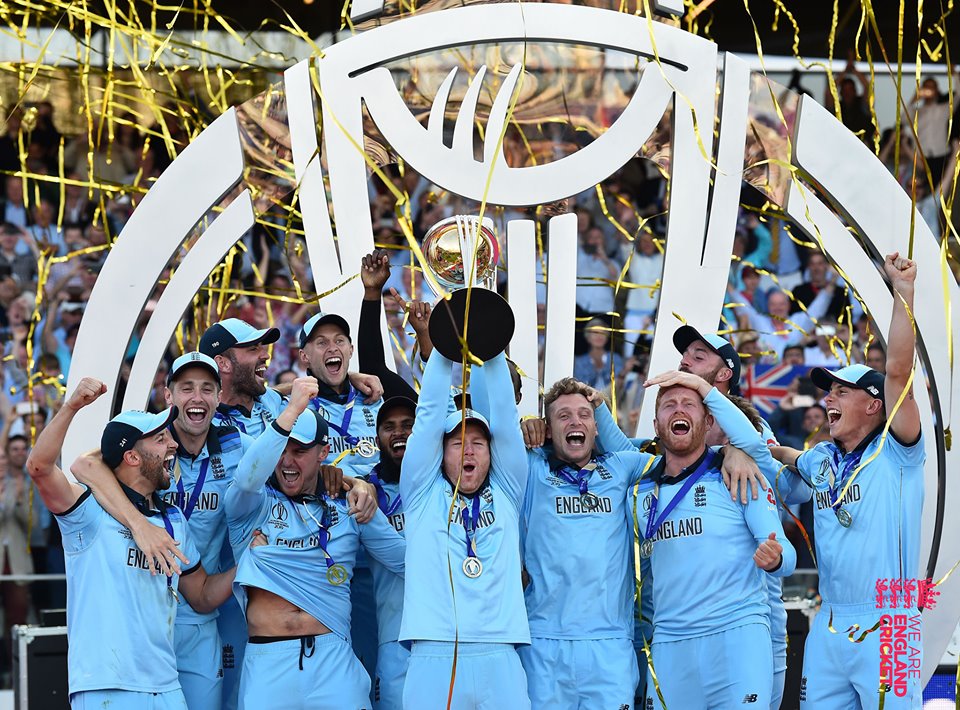Beyond emotions and heartbreak, Lord’s final means much more for sport than an all-time epic
The 2019 World Cup final had it all - it had drama, it had heartbreak, and was a stirring reminder of why we watch the sport in the first place. The last one hour had enough elements to make it the “greatest World Cup match of all-time” and had the potential to tap into a whole new audience.

It was cricket in its purest form and the complications, until the Super Over started, made no appearance, sans the overthrow “six” runs, which in a way, ended New Zealand’s epoch of self-belief. It was England’s campaign of light too. One that saw them being jokers to jockers, one that moved away from Ian Botham-inspired tuk-tuk life to Eoin Morgan-Trevor Bayliss planned ultra-modern style ODI cricket where even Joe Root’s approach had been questioned at times. But a week after the ecstasy and heartbreak, discussing the game’s archaic rules to pondering on the competitiveness of this World Cup, there have been several new questions that have come to the fore for the two finalists.
Ever since the path-breaking 2005 Ashes - widely reckoned as the greatest ever Ashes series ever played - English cricket fans have been devoid of free-to-air (FTA) cricket. Even as recently as last week, Sky Sports agreed to pay £1.1billion for the rights to show all of England’s home matches from 2020 to 2024. The one-off agreement with Sky to allow Channel 4 - an FTA channel - to broadcast the 2019 World Cup final between England and New Zealand, a combined peak audience of 8.3 million watched the Lord’s epic live on Television in the UK and didn’t really have to wait for the highlights to feel the ecstasy.
For an Indian cricket viewer, it might seem a peanut number considering as many as 229 million on Star TV and DD's FTA channel DD Sports watched the India-Pakistan Manchester ODI alone. To put things in perspective, even on Hotstar, 100 million people watched the game. However, in the context of English cricket, which has starved of the oxygen of free-to-air television for nearly a decade-and-a-half, the 8.3M for the World Cup final is staggering.
Let’s consider Australia for example. When the team was at the peak of its powers, winning two consecutive World Cups, one under Steve Waugh and one under Ricky Ponting, and virtually constructing arguably the greatest dynasty the sport has ever seen, the 2005 Ashes came at a ridiculous time for the fans. It was not only the sudden reverse scoreline on offer - a clear contradiction from the things they had grown up accustomed to - it was also down to the fact that for the first time, the series was not screened, even partly, on free-to-air television - a byproduct of the popularity of Australian Rules footy and the Rugby codes in the country. While Channel Nine later revised the policy, very few watched the series on live television and the effect of it is still being felt when AFL comes along each year, sidelining cricket from the national consciousness.
In his magnum opus “Sphere of Influence”, Gideon Haigh beautifully summarised the changing dynamics between the live audience and sporting events in the face of substantially lucrative television rights and how that affected the new audiences. “The subordination of the game to television’s priorities has had many perverse outcomes, but one of the strangest is this: where the accent of television coverage of the game used to be about making the viewer feel like he or she was there, today the opposite is true.”
One of the things to notice in Haigh’s analysis is that the game has slowly moved away from only having fun at the stadium to the idea of betting and gambling by sitting at home or chilling with a beer or two while sitting on the couch. But subscription-based coverage - even though it brings in a huge amount of money - results in far bigger problems for the sport as it actually confines itself to a select few who could afford to spend £24/month to watch cricket.
The subordination of the game to television’s priorities has had many perverse outcomes, but one of the strangest is this: where the accent of television coverage of the game used to be about making the viewer feel like he or she was there, today the opposite is true.
Gideon Haigh, in Sphere of Influence
This summer’s World Cup had come with a lot of possibilities. For the first time, England came to a World Cup as the outright favourites and were playing a brand of cricket that was as refreshing for the English fans. Also, there was no competitive football in England during the time, and apart from Wimbledon and the British Grand Prix, that too at the fag end, the World Cup had an exclusive window to explore and tap into a new audience. However, the lack of free-to-air TV meant that the FIFA Women’s World Cup had the highest TRP in the United Kingdom and it is fair to say that cricket missed a trick there.
New Zealand was not so different either. New Zealand’s Sky Sport had the coverage rights for the event but the huge amount that goes behind the paywall which meant that despite two consecutive final appearances in the World Cups, it still hasn’t come close to capturing the national consciousness. Cricket, being a summer sport, lost out to a lucrative world of Rugby, and as former Kiwi International Mathew Sinclair told SportsCafe, cricket is struggling for space as well.
“Rugby is a big sport in New Zealand, cricket is the second or third biggest sport there. It is basically a summer sport. Football now started to encroach into the summer sport. So what happens is we are losing a lot of kids to other sports as people are finding that as more lucrative. However, here in India, everyone wants to be an Indian cricket player. Therein lies the difference between the culture,” Sinclair told SportsCafe when asked about cricket’s future in the country.
England have transformed themselves into a tour de force of consistency and ruthlessness in ODI cricket, which culminated with the World Cup win, but it is also worth noting that the future of the format in the country is in massive danger. As ECB prepare themselves for "The Hundred", which is going to debut at the same time as the domestic 50-over competition would effectively rule out the best 100 or so white-ball players to the new-found love. Would England’s ODI revolution get hit by the impact of the shortest version of the game?
It will most likely be the case but the impact of the win will be telling too. Although the revenue generated through gate receipts has rarely dropped down in England, the demographic - who are buying tickets to come to the venue are majorly old and retired people - has been one of the major concerns for the board. England’s ultra-modern approach has been a sense of optimism. If ECB, and in a way Sky TV in New Zealand, finds a way to cash in with this success, well, a new whole new audience will be attracted and as Liam Plunkett told BBC on Thursday, "Playing for England you're the pride of the country. You want people to be able to access that and watch that. We feel like we've built something special here as a team." And he couldn’t have been more right.
Cricket FootBall Kabaddi
Basketball Hockey
SportsCafe

Comments
Sign up or log in to your account to leave comments and reactions
0 Comments